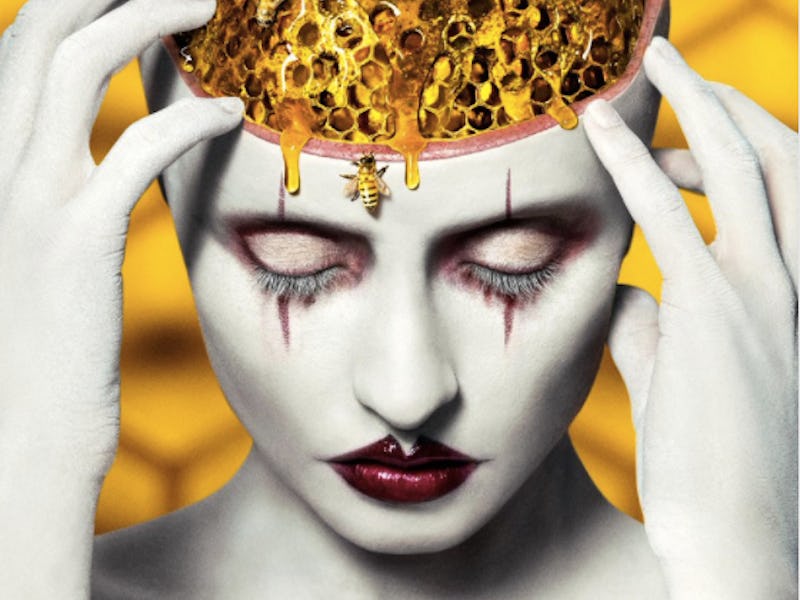The anthology series American Horror Story is continuing its exploration of the macabre with season seven’s theme: cult. Clowns and bees inundate the recently released marketing materials, which show-runner Ryan Murphy drops as clues in the weeks leading up to the season premiere. The newly released poster for the show reveals a pale-faced clown whose cracked-open head contains a bee hive brain.
The clown likely links to this season’s political undertones, but the bee-in-the-brain imagery almost certainly symbolizes a hive mind.
The problem is, to equate a “hive mind” with the thought processes of cult members is to misappropriate the term. In the natural world, a hive mind pulls together limited intelligence and information from individuals to make one decision that will ideally better the group. Cult formation, however, is believed to be based on a form of groupthink that relies on a similar idea of conformity — but one that is irrational rather than rational.
While American Horror Story clearly wants to link the hive mind of bees to cults, the scientific interpretation of “hive mind” is quite different from its colloquial definition. A hive mind is more biology than psychology — an element of the animal kingdom that has been studied to help artificial intelligence advance. If the cult of American Horror Story does resemble a real hive, it’ll look more productively harmonious than terrifying.
Let’s go back to bees: Bee cooperation, known as eusocial behavior, is a type of complex animal behavior that hinges on group decision-making. Eusocial animals — whether they’re bees, termites, or marine shrimp — all live in groups, cooperatively take care of the group’s young, have a reproductive division of labor, and have an overlap of generations within the group. The predominant advantage of being eusocial is that it increases the collective’s chances of survival: groups do better against predators. Most evolutionary scientists think eusociality emerged as groups of organisms realized this advantage, and then they continued the practice until they reached a “point of no return” — the hive mind became the only option.
The ties that eusociality creates within a hive are strong: A fertilized queen, for example, can take a swarm of up to 20,000 bees with her when she starts a new colony. Some scientists, like Cornell University neurobiologist Thomas Seeley, Ph.D., argues that it’s accurate to think of a honeybee colony as a single living entity. “A colony of honeybees,” he writes in his book Honeybee Democracy, “is far more than an aggregation of individuals, it is a composite being that functions as an integrated whole.”
This integrated whole uses the collective abilities of the bees — whether they are a nurse, forager, drone, or the queen — to create a thriving hive. That’s the idea that underlies the tech world’s adoption of the “hive mind”. Here, the idea is that if opinions are massively crowdsourced, that heap of data can be turned into a tool that can maximize the potential of human decision-making.
But a cult in the throes of groupthink does not operate in that way. According to social psychologist Irvin Janis’ theory of groupthink, people succumb to group pressures and eventually “ignore alternatives and tend to take irrational actions that dehumanize other groups.” That form of thinking is probably way more likely to be at the heart of AHS: Cult, but it can’t be portrayed as snappily as a bunch of bees. This new season will likely be pretty scary, but the hive mind won’t have a role.
